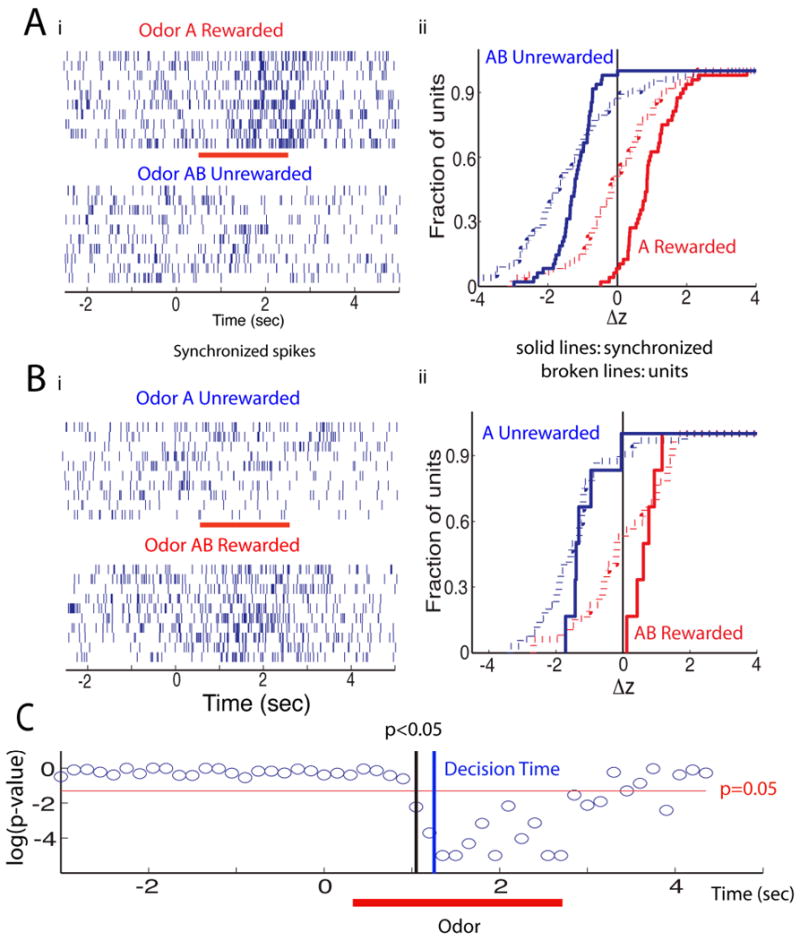Figure 4.

Odor responses of spikes synchronized between two multi-units. Spike trains are shown for one block of the session where the mice learned to differentiate between odors A (rewarded) and AB (unrewarded) (Figure 4A) and in a second session where the odors were reversed for reward (AB rewarded, A unrewarded) (Figure 4B). Synchronized spikes were those firing in both units within < 250 μsec and the block chosen was the best block where the odor responses to the two odors were most divergent. (Ai) synchronized spike trains for divergent odor responses in best block (trials: 10 rewarded, 10 unrewarded, red bar is the RA -0.5 to 2.5 sec- for the rewarded odor). (Aii) z-score cumulative histogram in best block for 68 spike trains for multi-unit odor divergent responses (broken lines) and for 48 odor divergent synchronized spike trains. Z-score was calculated as the RA firing rate minus the rate for the 2 seconds preceding the RA divided by the standard deviation of the rate in the preceding interval. The magnitude of the difference in z-score between rewarded and unrewarded odor did not correlate with when the best (most divergent) block occurred (correlation coefficient of 0.05, p-value of 0.76). Synchronized spike trains (Bi) and z-score cumulative histogram (Bii) for odor reversal session including 31 multi-units (broken lines) and 6 multi-unit synchronized pairs (solid lines, n=6) (odor A –blue-unrewarded and odor AB –red-rewarded). (C) p-value for a ranksum test reporting on the difference in the Euclidean distance between rewarded and unrewarded odor responses in principal component (PC) space. PC analysis was calculated for the time course of synchronized spike firing in multi-units in all trials within the best block (see Figure S3 for the results of the PC analysis). The response to the rewarded and unrewarded odors diverges at ∼1 sec. The animal makes a decision to stop licking for the unrewarded odor at ∼1.25 sec (blue line, determined by a ranksum test of the difference in licks in best blocks with > 85% correct responses).
